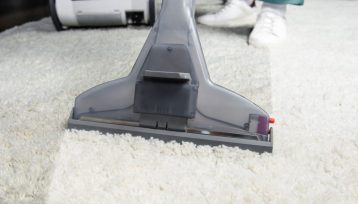There are pros and cons for using timber decking for your outdoor area. Although some hardwoods are costly and require maintenance on a yearly basis, the best options are made from sustainable forests and can be dyed in a variety of colours. In addition to the high-end hardwoods, you can choose from grooved, smooth, or gripping designs. Pine is an eco-friendly option as it is harvested from plantations, but it does require annual maintenance, and it can turn grey.
Wood decking is splinter-free
If you’re building a deck for your home, wood canberra decking is one of the best options. However, wood can splinter over time, causing pain to sensitive skin. It’s best to choose modified wood – also known as Kebony – that offers improved strength over time and is splinter-free. Kebony uses a bio-based liquid to treat the wood, which is safe for contact with people and doesn’t leach into the surrounding ground.
Composite decking is made from recycled materials, avoiding the potential for rot and warping. Most composite decking brands are fully moisture-resistant to the core, making them suitable for installation in high-moisture environments. Additionally, composite decking requires minimal maintenance and doesn’t have the risks of rot and splinters. It also can mimic the natural look of wood. Modern composites can even imitate the grain pattern and wood deck boards.

It requires little maintenance
Regular maintenance is the best way to maintain your deck. Sweep the surface of your deck at least twice a week to remove dirt and algae. Sweep up spills immediately so they don’t stain the deck or become mouldy. Replace worn wooden boards one at a time. If the boards are left for too long, they could become mouldy and may even be infested with insects.
Wood is warm, natural and strong. It adds a touch of character to any backyard. Wooden decking requires regular staining, and if it is not stained, it will fade and become unsightly. However, wood does require some maintenance, particularly when it comes to preventing rot and insects. If you are averse to these tasks, consider a lower maintenance option such as a PVC deck.
It is durable
There are several factors to consider when selecting a timber deck for your home. Some species are more durable than others, and some are better suited to different uses than others. The Timber Decking and Cladding Association recommends that decking materials have a minimum service life of 15 years and a moderate to durable durability for above-ground use. Hardwoods, on the other hand, require more maintenance and are less resistant to moisture, pests, and biological attack.
Timber is a natural material that offers a rustic charm. It can be stained or finished in many colours and styles. Compared to other materials, timber is also cheaper to purchase. In addition to being lightweight and strong, timber also requires less maintenance. You can sand and shape the timber to make it look exactly the way you want it. Additionally, timber is less likely to warp or decay than cheaper alternatives. Lastly, it won’t attract insects like other materials.
It is cheaper than composite decking
When comparing timber and composite decking, consumers should look for the following qualities. One thing that sets timber apart from composite is its natural beauty. It ranges from luminous gold to deep red, and some species age gracefully without oiling or recoating. Some people even celebrate the weathered grey look of timber. In comparison to real wood, composite decking is cheaper than timber and composite boards look a lot like real wood. Although most composite boards are more uniform than timber, some cheaply made boards may look tacky.
Composite materials are more expensive than timber, but they do not require any maintenance. Wooden decking is also very safe for children, while composite materials are made of fibres encased in a plastic casing. This means there is no risk of splintering or cracking with composite decking. Many people still prefer timber decking, though, because it looks elegant. Composites, on the other hand, may have an artificial look and feel.
It is fire-safe
Before you get started on your deck, you should know about fire safety. Fires can be caused by vegetation and lattice fencing. If you have a deck, it is important to remove vegetation around it or keep it at least nine to thirty meters away from your home. When choosing plants, consider those that are resistant to fire. Additionally, make sure that the deck you build is high enough to allow you to store materials and keep the area free of vegetation.
In addition to having a fire-safe deck, you should keep a water source nearby. It is recommended to keep a bucket or a bowl of water near your fire pit. Alternatively, you can keep a covered bucket, tub, or pitcher nearby. A fire extinguisher of Class A is also an option. It is important to know the fire safety requirements of your locality so that you can choose the right one for your deck.


